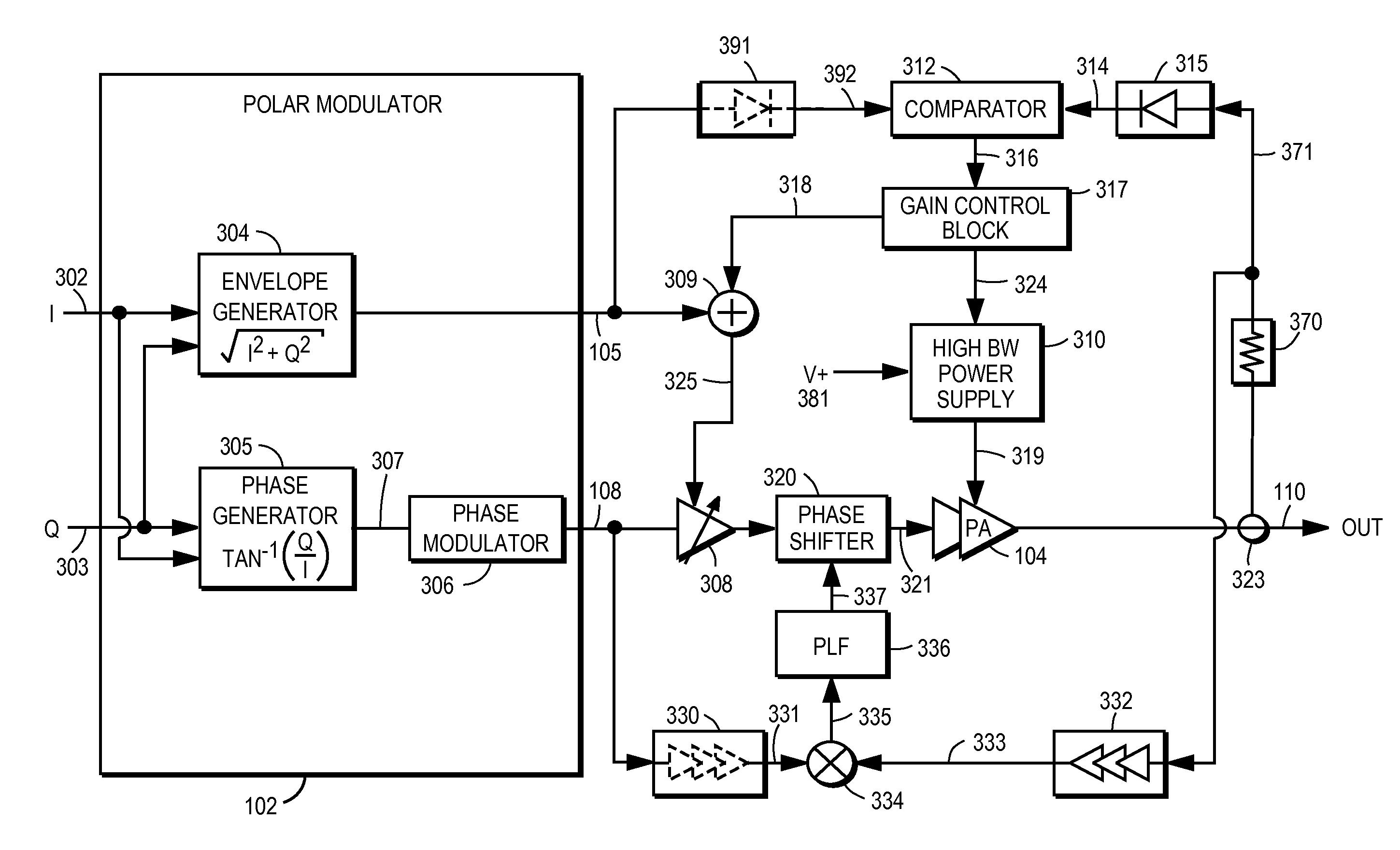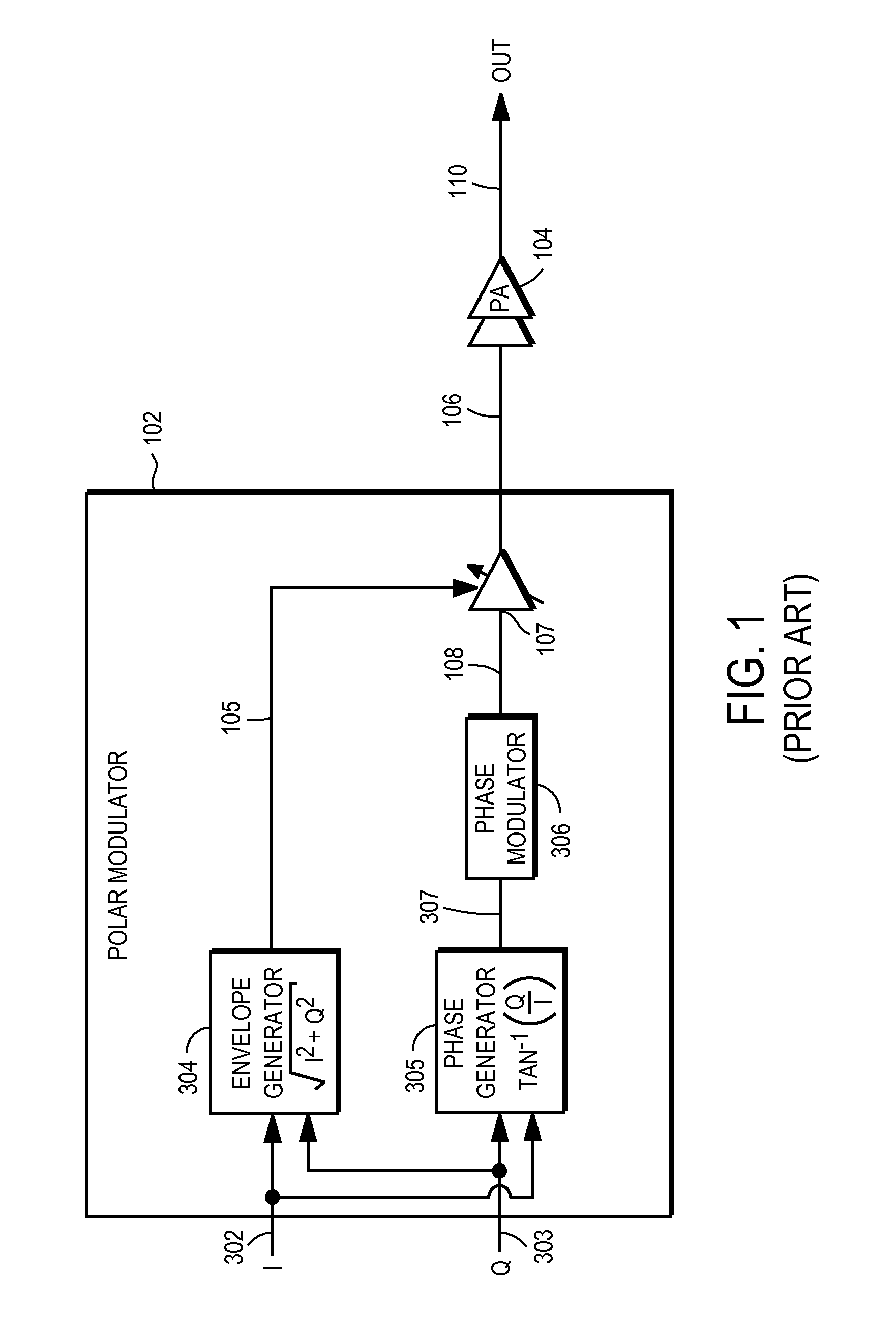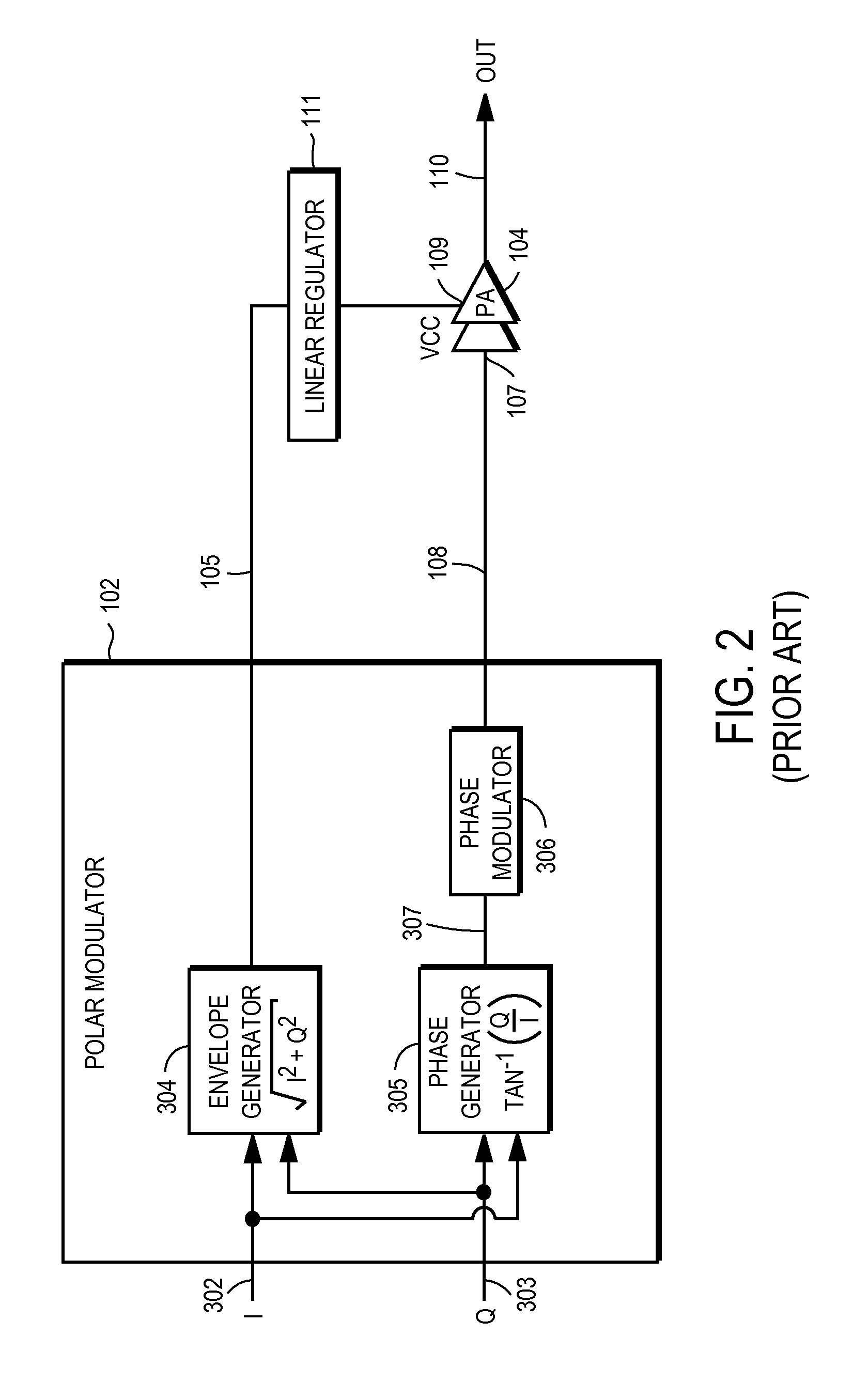Power Amplifier Controller With Polar Transmitter
a power amplifier and transmitter technology, applied in amplifier modifications, baseband system details, wireless communication, etc., can solve the problems of sacrificing more efficiency, reducing overall design complexity, and undesirable wide spectral occupancy, so as to reduce glitches, increase power efficiency, and reduce overall design complexity
- Summary
- Abstract
- Description
- Claims
- Application Information
AI Technical Summary
Benefits of technology
Problems solved by technology
Method used
Image
Examples
first embodiment
[0029]FIG. 3A illustrates an RF transmitter circuit including a PA controller for operating with a polar modulator 102 according to the present invention. The polar modulator 102 receives I,Q baseband signals 302, 303 and generates an amplitude component 105 of a desired RF signal and a phase modulated signal 108. A variable gain amplifier (VGA) 308 reconstructs the desired RF signal by recombining the phase modulated signal 108 and the amplitude component 105. A power amplifier 104 generates an amplified RF output signal 110 from the reconstructed RF signal 321. Additional circuitry of the PA controller provides feedback control signals that reduce distortion of the RF output signal 110 and increase power efficiency of the PA 104. Operation of the control circuit will be described in further detail below.
[0030]In one embodiment, the polar modulator 102 comprises an envelope generator 304, a phase generator 305, and a phase modulator 306. The envelope generator 304 receives the I,Q ...
second embodiment
[0052]FIG. 4 illustrates an RF transmitter circuit in accordance with the present invention. The circuit in FIG. 4 is similar to the circuit of FIG. 3A with a few variations as will be described. First, delayed versions 346, 344 of the amplitude component 105 and the phase-modulated signal 108 of the desired RF signal are applied to the amplitude and phase correction loops, respectively. In one embodiment, a delay block 301 is inserted between the envelope generator 304 and the comparator 312 in the amplitude correction loop. A delay block 340 in series with another phase modulator 342 is also inserted between the phase generator 305 and the limiter 330 of the phase correction loop. The phase modulator 342 may be a duplicate of the phase modulator 306. Alternatively, the delay block 340 can be inserted after the phase modulator 306 to eliminate the need for the duplicate phase modulator 342. However, a delay block inserted after phase modulator 306 may increase the complexity of the...
third embodiment
[0057]FIG. 5 illustrates yet another RF transmitter circuit in accordance with the present invention. The circuit is similar to the embodiment of FIG. 4 but varies the implementation of the phase correction loop. In this embodiment, the phase shifter 320 in FIG. 4 is eliminated and the output of the VGA 308 is connected directly to the PA input 321. The PLF output 502, which represents the loop phase error, is instead summed with the output of the phase generator 305 at a summer 504, thus providing a pre-shifted phase component 507 to the phase modulator 452. Thus, the phase modulated signal 108 now includes the equivalent phase shifts present after the phase shifter 320 in the embodiments described in FIGS. 3A and 4, but without requiring the phase shifter 320. The embodiment advantageously shifts the phase prior to the phase modulator 452 rather than in the RF path. This removes a potential source of noise and design complexity from the RF signal path.
[0058]In one example, the pha...
PUM
 Login to View More
Login to View More Abstract
Description
Claims
Application Information
 Login to View More
Login to View More - R&D
- Intellectual Property
- Life Sciences
- Materials
- Tech Scout
- Unparalleled Data Quality
- Higher Quality Content
- 60% Fewer Hallucinations
Browse by: Latest US Patents, China's latest patents, Technical Efficacy Thesaurus, Application Domain, Technology Topic, Popular Technical Reports.
© 2025 PatSnap. All rights reserved.Legal|Privacy policy|Modern Slavery Act Transparency Statement|Sitemap|About US| Contact US: help@patsnap.com



